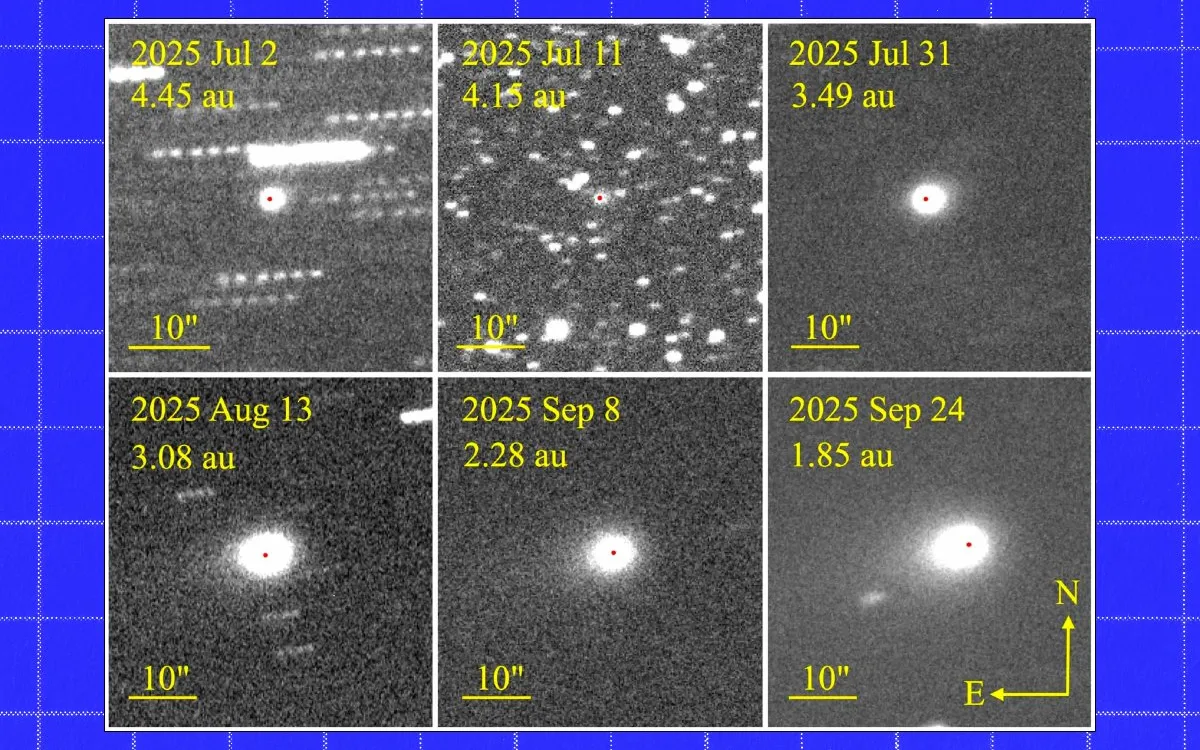
In an exciting development for the astronomical community, a fascinating object known as 3I-ATLAS is making its way through our solar system. This interstellar object, dubbed the third of its kind, has captured the attention of scientists and space enthusiasts alike since its discovery in early July. Classified as an interstellar comet, its unusual characteristics have sparked a lively debate among experts regarding its origins and potential implications.
The prevailing theory suggests that 3I-ATLAS is simply an interstellar comet. However, renowned astronomy researcher Avi Loeb from Harvard University has stirred controversy by proposing that this object could be a spacecraft from an alien civilization. While many of his peers have dismissed this hypothesis, Loeb’s provocative stance continues to fuel discussions in the scientific community, igniting curiosity about the object’s true nature.
Currently, 3I-ATLAS is positioned behind the Sun, rendering it invisible from Earth for nearly a month. This unique positioning has raised questions about what the object might do during this period of obscurity. Loeb has speculated that it may take advantage of this blind spot to execute unexpected maneuvers, potentially revealing more about its capabilities and intentions.
Recent images captured by the Nordic Optical Telescope located in the Canary Islands have provided intriguing insights into 3I-ATLAS. These images indicate that the object has developed a "tail" of debris as it approached the Sun, which has now altered its direction, creating an effect known as an anti-tail. This phenomenon has been documented in numerous comets over the past decades and is primarily attributed to the relative positions of the object, the Sun, and Earth, creating a 3D optical illusion.
In his latest blog post, Avi Loeb presents an alternate explanation for the observed anti-tail. He suggests that it could indicate an alien craft applying "braking thrust," effectively slowing down as it navigates through our solar system. "If the object is an alien spacecraft slowing down, and the anti-tail is braking thrust, then this change from anti-tail to tail would be entirely expected near perihelion," Loeb stated, referencing insights from his colleague Adam Hibberd at the Institute for Interstellar Studies.
Loeb further posits that if his theory holds true, the transition from an anti-tail to a tail could represent a technosignature, signaling controlled maneuvering with the potential goal of achieving a stable orbit within our solar system, possibly between the orbits of Mars and Jupiter. This idea raises profound questions about the existence of intelligent life beyond Earth and the technologies they may possess.
As the astronomical community eagerly awaits further observations, 3I-ATLAS is expected to reemerge on December 19. At that time, scientists will have the opportunity to determine whether its trajectory has indeed been influenced by any braking maneuvers or if it remains an inert snowball, as most researchers currently believe. Until then, the debate surrounding this enigmatic interstellar object continues to fuel intrigue and speculation in the world of astronomy.